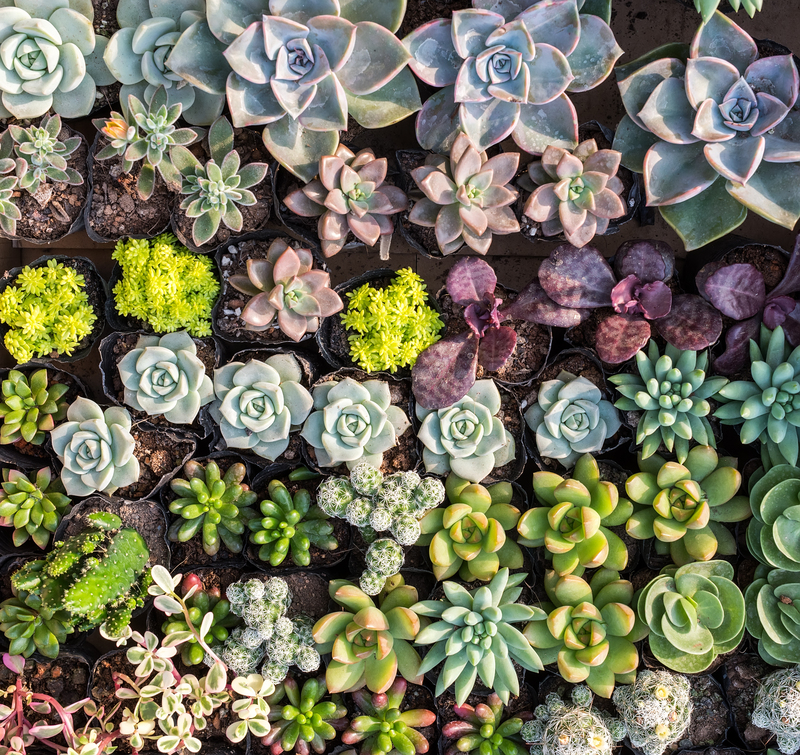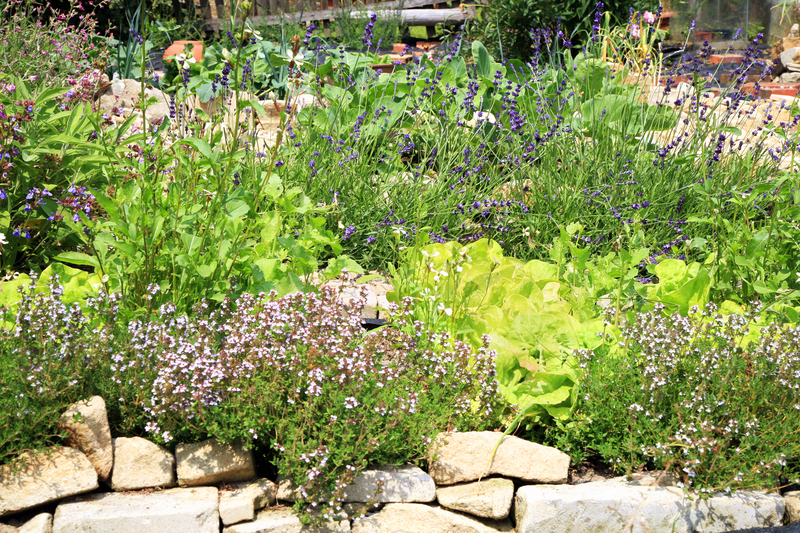The Dynamic World of Container Gardening Explained
Posted on 01/06/2025
The Dynamic World of Container Gardening Explained
Container gardening has transformed the perception of traditional gardening. No longer confined to sprawling backyards or vast landscapes, people all over the world are embracing the dynamic world of container gardening--a practice that turns patios, balconies, rooftops, and even windowsills into lush, thriving oases. If you're looking for a way to exercise your green thumb without a plot of land, this comprehensive guide explains everything you need to know about the multifaceted art and science of gardening with containers.
What is Container Gardening?
At its core, container gardening is the practice of growing plants--whether they be flowers, herbs, vegetables, or even small trees--in pots, boxes, tubs, barrels, or any vessel that can hold soil and plants. Unlike in-ground gardening, container plantings offer mobility, versatility, and unlimited creative opportunities. Whether you have a compact urban balcony or a sprawling suburban deck, container-based gardening can turn any space into a vibrant green retreat.
Key Benefits of Container Gardening
- Mobility and Flexibility: Move plants to make the most of sunlight, shelter from wind, or redesign your outdoor living space anytime.
- Versatility: Grow anything from succulents and ferns to tomatoes and citrus trees, even if you only have a windowsill.
- Space Optimization: Perfect for small spaces, renters, or urban dwellers without access to traditional plots.
- Pest and Disease Control: Isolate plants more effectively, minimizing cross-contamination.
- Soil Customization: Tailor soil types and nutrients for individual plant preferences.
- Accessibility: Ideal for gardeners with mobility limitations. Raised containers make gardening easy for everyone.

Essentials: Choosing the Right Container
Not all containers are created equal! Choosing the right pot or box is crucial to your plants' success. Here's what to consider for successful container gardening:
Factors to Consider in Container Selection
- Size: Larger containers hold more soil, which ensures better moisture and temperature retention. Deep-rooted veggies like tomatoes need tall, wide pots, while shallow-rooted herbs do well in smaller ones.
- Material: Containers come in clay, ceramic, plastic, wood, metal, or even biodegradable materials. Each has advantages and drawbacks in terms of weight, insulation, and aesthetics.
- Drainage: Good drainage is essential! Make sure your container has adequate drainage holes to avoid waterlogged roots, which can lead to root rot and plant diseases.
- Weight: Consider whether your container and plant can be moved easily. Lightweight plastic is portable but may not insulate roots as well as heavier materials.
- Style: From bright, modern planters to rustic repurposed buckets, choose pots that reflect your personality and complement your decor.
The Soil Story: Selecting the Best Medium
Container gardening isn't about scooping up soil from your yard and filling a pot. Plants in containers thrive best with specially formulated potting mixes. Here's what makes great soil for container plants:
- Well-draining: Prevents water from pooling around roots, something garden soil often fails at in pots.
- Aerated: Good mixes include ingredients like perlite, vermiculite, or coarse sand to keep soil light and airy.
- Rich in nutrients: Potting soils start with balanced fertilization, but regular feeding is essential since nutrients leach out quicker in containers.
- Sterile: Free of weed seeds, pests, and soil-borne diseases that could harm potted plants.
Why not regular garden soil? Simply put, it compacts quickly, lacks sufficient drainage, and can be full of pests. Always opt for quality potting mix tailored to your plant's needs.
Light, Water, and Air: Meeting Plant Needs
Container gardening success hinges on getting the fundamentals right. Three critical elements--light, water, and airflow--must be managed carefully for happy container plants.
Light Requirements for Container Plants
- Observe your space: Is it full sun, partial shade, or mostly shaded? Each plant type has unique sunlight needs.
- Location flexibility: The best part of container growing is the option to relocate pots seasonally or daily, ensuring your plants always get the light they crave.
- Supplemental lighting: Indoor gardeners can use grow lights to provide necessary rays during shorter winter days.
Watering Techniques
- Check daily: Containers dry out more quickly than ground soil, especially in hot or windy conditions.
- Water deeply: Roots need thorough soaking rather than frequent shallow watering.
- Self-watering containers: Consider using pots with built-in reservoirs to minimize maintenance and avoid under- or over-watering.
Promoting Good Air Circulation
- Spacing: Don't crowd your pots. Airflow helps prevent fungal diseases and supports robust growth.
- Pruning: Regular trimming keeps plants healthy and maximizes air movement between foliage.
Plants that Thrive in Containers
Almost anything can be grown in pots! Still, certain varieties are especially well-suited for the dynamic world of container planting. Consider the following tried-and-true favorites for your next project:
Top Edible Choices
- Herbs: Basil, thyme, mint, parsley, and chives flourish in pots and provide instant flavor for your kitchen.
- Leafy greens: Spinach, lettuce, kale, and arugula grow fast and are harvested easily from containers.
- Tomatoes and peppers: Choose determinate (bushy) varieties for small pots; select sturdy stakes or cages for support.
- Strawberries: Perfect for hanging baskets or tall, tiered planters.
- Root crops: Carrots, radishes, and beets need a deep container and loose soil.
Ornamental Beauties
- Annual flowers: Petunias, marigolds, impatiens, and geraniums bring color all season long.
- Tropical plants: Caladiums, elephant ears, and cannas flourish in warm, sheltered spaces.
- Dwarf shrubs and trees: Citrus, Japanese maple, and olive trees create year-round structure and elegance.
- Succulents and cacti: Perfect for sunny, dry spots--plus, they're virtually maintenance-free.
Design Ideas: Creative Approaches to Container Gardening
Vertical Gardens
Maximize your container garden by growing upwards! Stackable planters, wall pockets, and trellises let you cultivate more in less space. Vertical arrangements are not only practical but add stunning visual impact to bare walls or fences.
Mixing Plant Textures and Colors
Combine trailing, upright, and mounding plants for dynamic displays. Contrasting colors and leaf shapes ensure your containers have year-long appeal. Try classic "thriller, filler, spiller" combinations:
- Thriller: Tall focal-point plant (e.g., ornamental grass or canna lily)
- Filler: Mid-height, bushy varieties (e.g., coleus or begonias)
- Spiller: Cascading plants (e.g., sweet potato vine or trailing lobelia)
Repurposed and Upcycled Containers
Unleash your creativity! Vintage watering cans, tea cups, wine crates, and old boots can all become unique planters. Make sure to add drainage holes and select the right plants for fun, eco-friendly designs.
Common Challenges and How to Overcome Them
Pests and Diseases
- Be vigilant: Check leaves for aphids, spider mites, or fungus regularly.
- Encourage beneficial insects: Ladybugs and lacewings can help naturally fight pests.
- Good hygiene: Remove dead foliage and clean containers between plantings to combat disease.
Overwatering and Underwatering
- Monitor closely: Insert your finger into the soil to test moisture before watering.
- Use the right soil: Poor soil leads to compaction and drainage problems. Always use fresh, quality potting mix.
Soil and Nutrient Depletion
- Refresh soil annually: Over time, potting mix loses nutrients; replace the top few inches or repot altogether each season.
- Fertilize often: Container gardens require regular feeding, especially for heavy feeders like tomatoes or annual flowers.
Seasonal Container Gardening Tips
Spring and Summer
- Use annuals and edibles: Sow fast-growing herbs, flowers, and salad greens.
- Watch watering: Containers dry out quickly as temperatures rise; daily checks are essential.
- Fertilize: Start with a slow-release fertilizer and supplement with liquid feeds as needed.
Autumn and Winter
- Switch to hardy plants: Ornamental kale, pansies, and evergreen shrubs provide winter interest.
- Insulate containers: Move pots closer to the house or wrap with burlap to protect roots from freezes.
- Reduce watering: Plants use less water in cooler, less-sunny weather.
Eco-Friendly Container Gardening Practices
Green your container gardening further with sustainable choices:
- Choose recycled planters: Upcycle household items or select pots made from recycled materials.
- Harvest rainwater: Collect rain in barrels for watering containers and reduce waste.
- Compost: Add organic matter to your potting mix for improved soil and reduced landfill waste.
- Native plants: Opt for local species that require less water and attention.

Frequently Asked Questions
Can you grow fruit trees in containers?
Yes! Choose dwarf or patio varieties such as figs, lemons, or apples. Use large, heavy pots, and make sure to provide annual feeding and regular pruning for best results.
How often should you fertilize container plants?
Most potted plants benefit from feeding every 2-4 weeks during the growing season. Use a balanced, water-soluble fertilizer adjusted for your specific plant type.
What's the best way to overwinter container plants?
Move frost-tender containers indoors or insulate with mulch and burlap outdoors. Reduce watering, and withhold fertilizers until spring.
Conclusion: Embracing the Dynamic World of Container Gardening
The dynamic world of container gardening offers limitless opportunities for gardeners of all experience levels, living situations, and climates. Whether you're growing a tiny herb collection or a lush balcony jungle, the right containers, soil, plant choices, and care can help your garden flourish. Embrace the flexibility, creativity, and connection to nature that container gardening provides--one pot at a time. Start experimenting today, and discover the joys of growing your own haven, wherever you call home.
Ready to get growing? Explore the dynamic world of container gardening and transform any space into a flourishing, green sanctuary!

